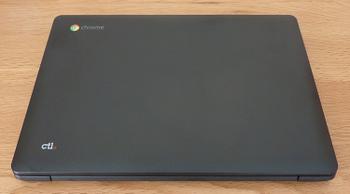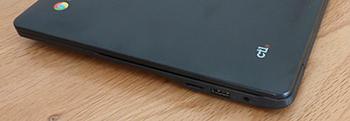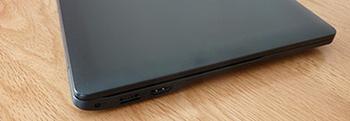Introduction
The humble Chromebook has gone through many revisions since its inception nearly five years ago. Originally designed as a low-cost notebook running the Google Chrome OS and connected to the cloud for everyday work, there are now premium models such as the Pixel, a wider range of touchscreen-enabled designs primarily from Asus, as well a bevy of entry-level offerings that target value above all else.
This budget end of the market is dominated by Chromebooks powered by the ARM architecture. Chief amongst the proponents of this Internet-connected device is Chinese chipmaker Rockchip, whose RK3288 system-on-chip processor powers a number of Chromebooks for the consumer and education markets.
Found in Chromebooks from Asus, Haier and HiSense, as well as the novel Chromebit, the RK3288(C) SoC is also present in education-focussed notebooks made popular by CTL. Priced at under $200 for the best-in-breed J4+, we have one in for evaluation today.
Under the hood: RK3288C
Before we get to the Chromebook it is instructive to take a peek at what makes the RK3288 SoC an ideal fit for these devices. The RK3288 uses two of ARM's best-known technologies - Cortex A-class processor and Mali graphics - and then wraps them inside a fully-baked SoC with display, memory, camera and connectivity support.
The Cortex-A17, which is ostensibly a speed-bumped version of the Cortex-A12, is arranged in a quad-core configuration and scales up to 1.8GHz. Though now superseded by the Cortex-A57 and Cortex-A72, the 32-bit-only processor remains a potent choice for an entry-level Chromebook. Graphics oomph is provided by the Mali-T760 GPU also in a quad-core configuration, and its performance in a range of last year's premium handsets bodes well for the kind of work that Chromebook users will engage in on a daily basis.
The rest of the SoC treads familiar ground. There's a dual-channel 64-bit memory controller supporting DDR3/L memory, 4K-capable HDMI-out, an H.264 video encoder/decoder, and 13MP ISP for snapping duties.
The point to appreciate is that a budget SoC provides enough general chutzpah for a fluid experience on a Chromebook. We've seen this proved empirically with the evaluation of the similar, yet more expensive, Chromebook Flip from Asus.
The CTL J4+
Designed primarily for the classroom but available to purchase from a selected number of retailers for regular customers, the CTL J4+ is solid enough to withstand the usual knocks that might occur in an education environment. The carbon-like pattern is, as you would expect, made of plastic, but it's of a high quality throughout. Grabbing the sides of the Chromebook in both hands results in very little flex. Indeed, we've seen full-on notebooks costing multiple times more having inferior build quality.
That said, the lid, although a dark grey, is a magnet for fingerprints. The slightest bit of grease or moisture shows up, so you'll be rubbing it away constantly to ensure it's kept nice and clean. Portability is a key concern for the education market, too; the J4+'s 1,124g weight is very competitive against other Chromebooks of a similar bearing, while the total travel weight, including small power charger, is less than 1,500g. My 11-year-old niece felt it was portable enough to be carried in a rucksack during the daily 15-minute walk to school.
There are inevitable compromises when retailing a sub-$200 Chromebook. One area where the J4+ falls slightly short is shown by a lack of USB 3.0. An older, slower port lines either side, with HDMI-out and a micro-SD card-reader also available. Though it would be nicer to have USB 3.0, the question we ask ourselves is whether it makes much of a real-world difference on a machine that's purposely designed to be used almost exclusively with the Internet?
Other than the previously mentioned quad-core Rockchip SoC operating at up to 1.8GHz, this Chromebook is supported by 16GB of eMMC storage, 4GB of DDR3L memory, 802.11ac WiFi, Bluetooth 4.0, and an integrated, 3,400mAh battery promising up to nine hours of regular usage from a single charge. A couple of 1.5W speakers offer rudimentary sound capabilities.





